

Table of contents
- The emergence of the pent roof
- Constructive features and static system
- Special shape sandwich roof
- The roof structure with sealing and insulation
- Roof coverings and slopes
- Bricks and concrete roof tiles
- Foil or bituminous waterproofing
- Covered with greenery / gravel
- sheet
- Roof structures and installations
- Costs
- Advantages and disadvantages
Hardly any other roof seems as simple and easy as the pent roof. Despite this, or precisely because of this, it has proven to be extremely versatile in its use and at the same time adaptable to current requirements of all kinds. Everything you need to know about this interesting roof shape can be found below.
The emergence of the pent roof
Exactly when and where the pent roof was built cannot be reconstructed. Due to its simplicity, however, it must be assumed that it has existed for a very long time and that it probably arose independently in numerous places at the same time. If you look at illustrations from the Middle Ages and even antiquity, there are always buildings that at least suggest that they are covered with a pent roof.
Constructive features and static system
If we look at the construction of a pent roof, its structural simplicity quickly becomes the focus of attention. In general, as is the case with many other constructions, the supporting structure of the roof is formed by wooden rafters. These are placed on the outer walls of the building, with a base and a ridge sill forming the lower and upper supports. From a very large span of five meters between the walls, it is worth supporting the rafters at one or more points between the outer supports. Since all rafters are in one plane, the additional support points are usually replaced by a beam, i.e. a beam, to reduce the number of supports required further beams underneath at right angles to the rafters, or in the form of a wall with an overlying sill that is desired there anyway implemented.
A NOTICE:
For each additional support point, the span of the individual fields is reduced and the required rafter cross-section is reduced due to the reduction in the load area per support. In addition, a multi-span girder created in this way is also much more load-bearing than a single-span girder between only two supports. The background to this fact is the fact that the neighboring fields relieve each other of the load on a continuous beam and the deflection is thus reduced.
Special shape sandwich roof
At this point, particular attention should be paid to the special case that the pent roof is not in is built in the form of a classic rafter construction, but created using sandwich elements becomes. A sandwich panel is a composite product of a load-bearing layer of sheet metal, a Insulation layer made of foamed plastic materials and a roof covering on the top made of one another sheet. Since load-bearing, insulating and sealing functions are combined in one component here, there is no need for structural support from rafters. Instead, the elements are placed directly on the required number of supports in the form of walls or beams.
The roof structure with sealing and insulation
However, the most common case with a pent roof is still the classic rafter construction. Therefore, a typical structure of a pent roof using a rafter system will now be explained as an example. From bottom (inside) to top (outside), the following layer structures result for a roof with thermal insulation inserted between the rafters:
- Lower clothing, e.g. B. Wood or plasterboard, on battens
- Vapor barrier as a diffusion-tight layer
- Rafter system with inserted thermal insulation, e.g. B. Mineral wool or cellulose insulation
- OPTIONAL: additional layer of insulation on the rafter layer, usually also effective as a watertight level
- Watertight level, usually in the form of a foil (unless provided with an additional insulation layer)
- Roof covering – see the following section for the different types of covering
Alternative structure with insulation layer on rafters (from bottom to top):
- rafter position
- Formwork made of gypsum fiber boards, wood etc.
- Diffusion-tight layer, e.g. B. as foil
- Insulation layer, either pressure-resistant as plastic foam, or soft as mineral wool or cellulose; in the case of soft insulation, joists are required as supporting structure roof covering
- Waterproof level, usually as a foil
- Roof covering - see next section
Roof coverings and slopes

While the actual roof structure is quite uniform, the actual roof covering and its substructure can differ greatly from roof to roof. Numerous variants are available for the pent roof:
Bricks and concrete roof tiles
Bricks and concrete roof tiles are identical in their use and function, but differ in the material used, clay or concrete. As a rule, they are applied to a two-layer substructure made of counter battens running from bottom to top and the actual supporting battens transverse to the direction of rise of the roof. The tiles or roof tiles are simply hooked into the battens with a lug on the back and, if necessary, fixed proportionately over the roof surface against strong wind suction with additional security.
- Minimum suitable inclination: usually 15 degrees, some types of bricks up to 10 degrees
- Maximum suitable inclination: depending on the type of tile and security, 45 degrees and more can easily be implemented, but then it usually no longer makes sense to have a pent roof
INFO:
The counter battens must always run along the slope of the roof so that any rainwater blown under the tiles can run off. On the other hand, cross battens on the waterproof layer would act as a brake for the water.
Foil or bituminous waterproofing
A homogeneous, flat roof covering is the version over roofing membranes on a foil basis, or as a bitumen-containing roofing membrane. Both differ in the type of materials, the bonding and the look. Otherwise, however, they can be considered identical.
1. With rear ventilation:
As a roof covering with rear ventilation, battens are applied to the waterproof level, which allows air to circulate to remove any moisture. This is followed by a supporting panel made of wood, to which the foil or bitumen roof is now applied.
2. Without rear ventilation:
Bitumen sheets or foil are applied directly to the insulation layer. There is no waterproof level below.
- Tilt: Both materials can be used anywhere from zero degrees
Covered with greenery / gravel

Neither a gravel roof nor a green roof are separate types of covering. Both coverings are based on a foil or bitumen roof. Often, however, these are provided with gravel or greenery, as both represent good ballast against wind suction and good protection against UV radiation and mechanical damage.
A NOTICE:
A green roof can also contribute to summer cooling of a house due to its water storage capacity and the possibility of evaporating this rainwater again.
sheet
Finally, sheet metal is often found as a roof covering, especially on flat pent roofs. The tin roof requires the same substructure as the foil roof, but is normally only ventilated.
- Suitable slope minimum: 5 degrees
- Suitable slope maximum: unlimited
Roof structures and installations
Classic roof structures, such as dormers or roof cut balconies do not exist with the pent roof. In the case of steeply pitched pent roofs, skylights can sometimes be used, but skylights are more common for the predominantly fairly flat pitch. In many cases, however, such additional lighting and ventilation is completely dispensed with, since the pent roof favors the accommodation of normal facade windows in the vertical walls.
Costs
Although the real costs can of course only be determined with reference to a specific object, it can be said without considering individual cases that a pent roof is a very favorable roof shape. Since the roof consists of only one surface, expensive construction details are reduced to a minimum and special points such as ridges, ridges, valleys, etc. completely avoided. It is true that an equivalent roof space under your pent roof requires more external wall space than with a pitched roof example would be the case. However, this is offset by better usability thanks to vertical walls and fewer sloping ceilings. In general, it can be said without difficulty that the pent roof is the same as all others roof shapes clearly outperforms from an economic point of view.
Advantages and disadvantages
Numerous advantageous aspects of the pent roof are of course also faced with some disadvantages:
Advantages
- Good usability of the rooms below due to little sloping roof and missing gables
- Simple construction
- Thus: low susceptibility to damage due to a few, simple details
- Thus: low costs due to the lack of complex components
- Versatile in inclination
- Diverse visual design options
- Large roof area without changes in inclination or position, well suited for solar thermal or photovoltaics
Disadvantages
- Space in the upper attic area that cannot be used if there is a steep incline
- Simple optics, playful design is therefore usually difficult
- Very high wall height on the ridge side
 Home editorial office
Home editorial office
Learn more about roof / attic
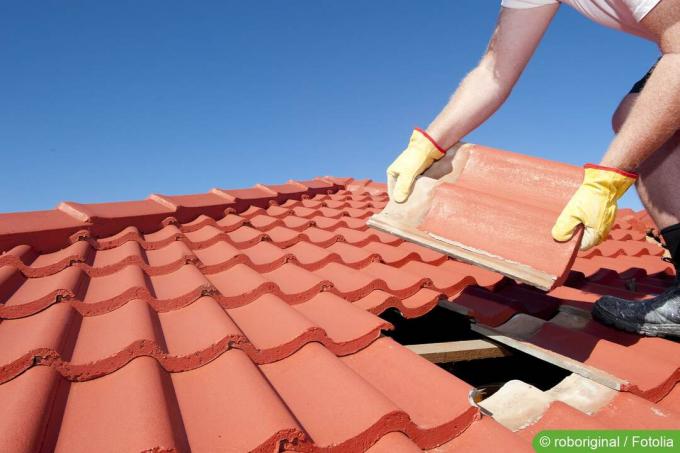
Snow blows under roof tiles: what to do?
Snow drifts often get under the roof tiles when blizzards or strong winds blow them underneath. The moisture often causes damage from meltwater. Air spaces between the roof tiles are to blame. Homeowners should now find out how to counteract this.
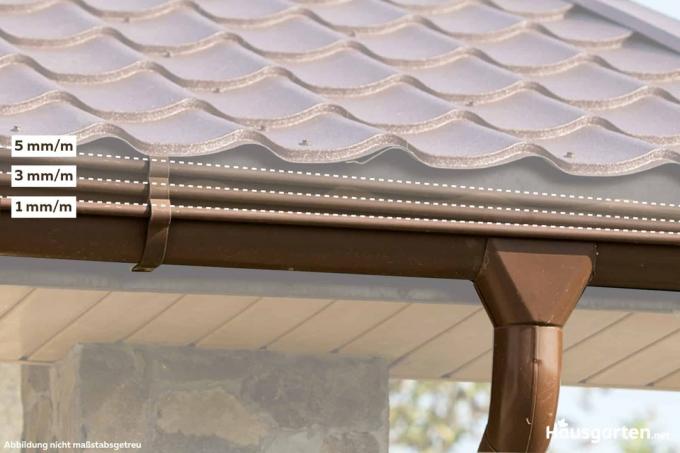
Gutter slope: the ideal gradient
For a gutter to function properly, a slope that has an ideal inclination is required. Various factors have to be taken into account. Before installation, you should find out how the gradient is to be calculated and implemented.
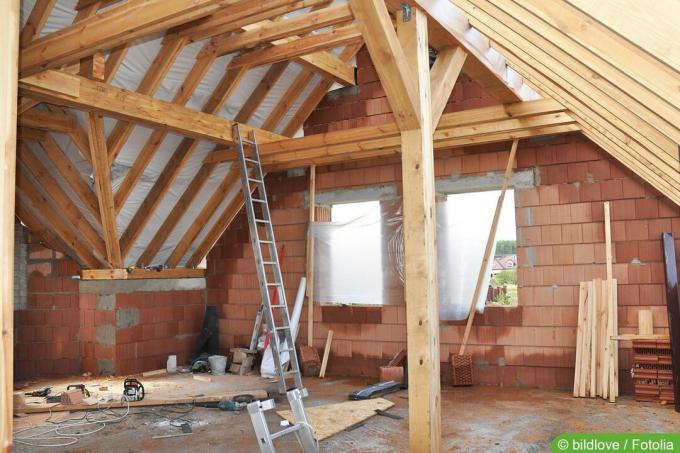
Which attic insulation can be walked on immediately?
Attic insulation effectively reduces heat loss from the building. If the attic is to continue to be used as storage space, the insulation should be accessible as soon as possible. A number of materials can be used for this. They each have advantages and disadvantages as well as different costs.
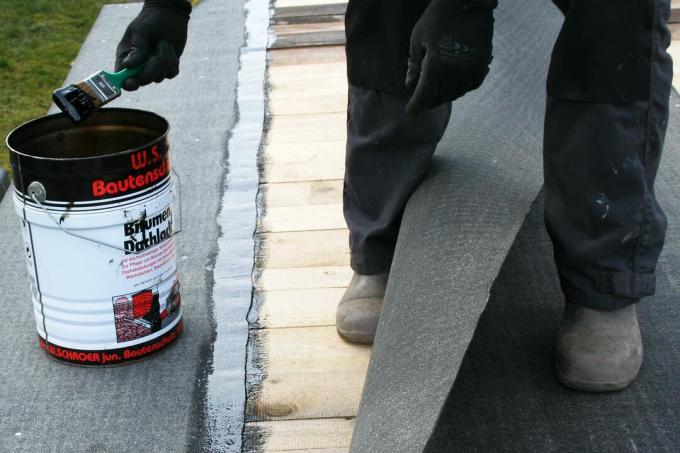
Bitumen stains: 6 removal tips
If you have to process bitumen, you should be careful. The black, viscous mass is sticky and adheres well to clothing, hands and all possible surfaces with which it comes into contact. With our tips you can successfully remove it.
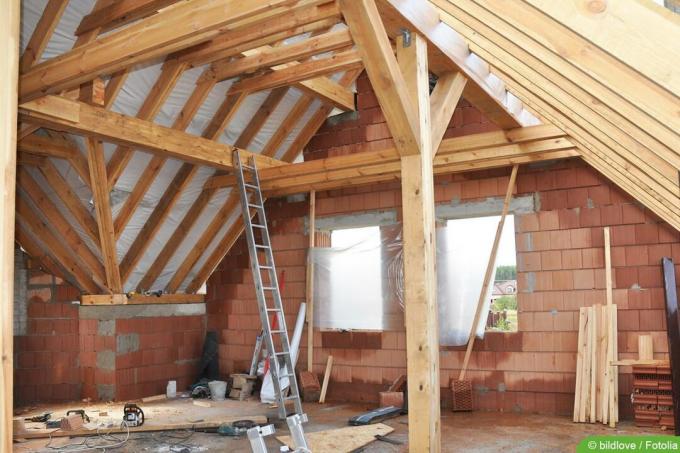
Attic: OSB or Rauspund as roof boarding?
Both OSB and Rauspund boards are suitable as roof boarding. But what are the differences and what is better suited for the attic? Our guide answers these and other questions about the two materials.

Laying a vapor barrier: how far does the vapor barrier have to go?
Laying a vapor barrier is essential in some cases. But how far does the vapor barrier have to be installed, what is it and what are the differences? These and more questions are answered in the following guide.



